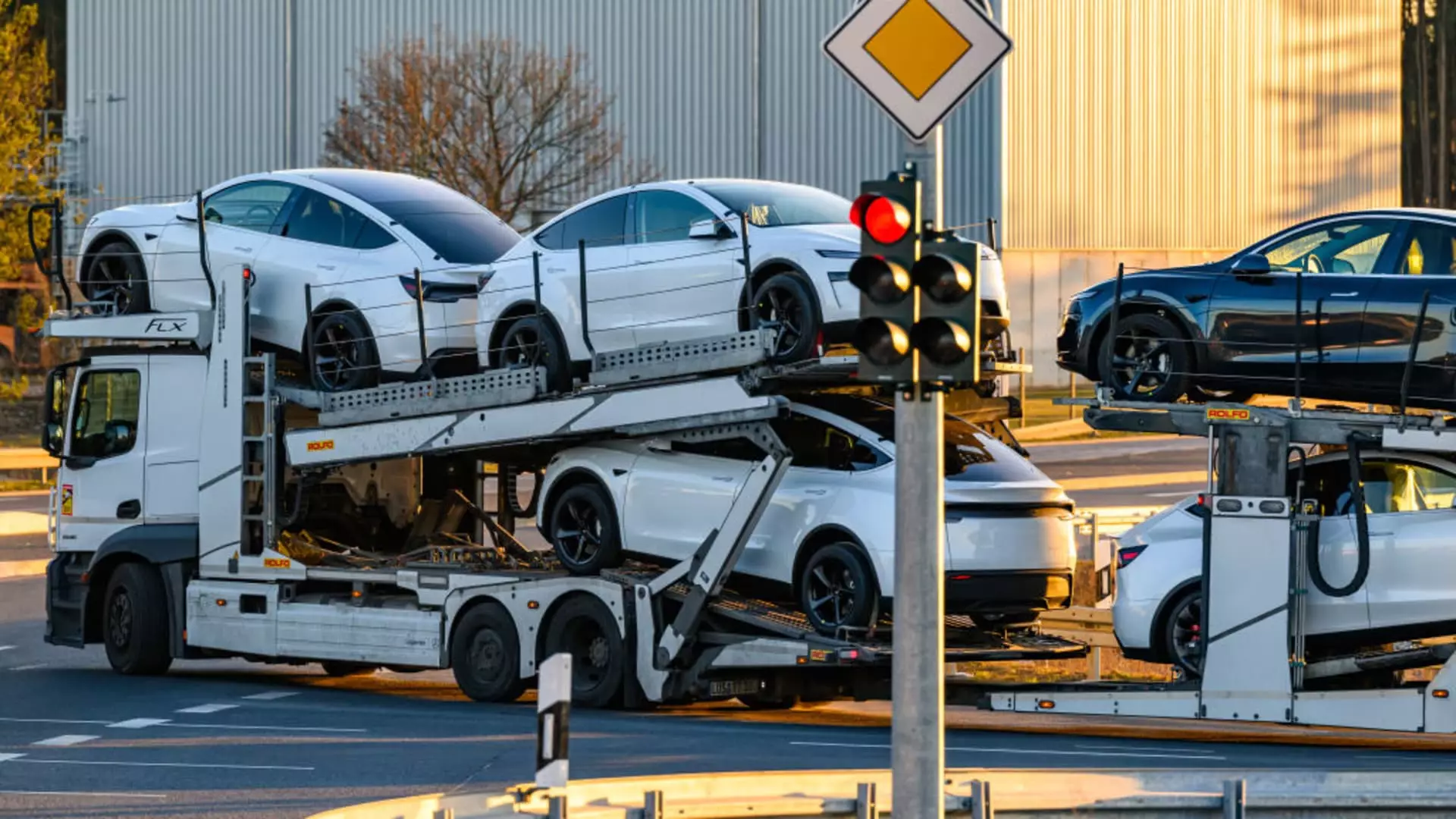In an alarming display of market vulnerability, Tesla reported only 336,681 vehicle deliveries for the first quarter of 2025. This figure marks a sobering 13% decline from the previous year, and it has investors reeling from their worst quarter since 2022. What was intended to be a beacon of promise for electric vehicles (EVs) has turned into a signal of upheaval. With Tesla’s stock bouncing back slightly amid uncertain executive changes, one can’t help but question what lies ahead for this once-revered titan of the automotive industry.
The Discrepancy Between Expectations and Reality
Market expectations were notably higher, ranging from 360,000 to 377,590 deliveries, driven by optimism that Tesla could keep pace with both production capabilities and competitive pressures. Instead, the company’s production stood at 362,615 vehicles, falling short of expectations and signaling problems that go deeper than seasonal adjustments. Analysts like Dan Ives have characterized this situation as a “fork in the road moment,” capturing the essence of the crisis—a moment where strategic direction must be either recalibrated or ruthlessly pursued. What is particularly striking is that Ives, a long-time bull on Tesla stock, is now employing language that hints at dire consequences if things do not shift.
The Challenge of Brand Integrity and Competition
Tesla’s past few months have been riddled with challenges both internally and externally. As production lines were upgraded to accommodate a newly redesigned Model Y, protests and boycotts erupted against CEO Elon Musk, largely fueled by his controversial political involvement. The dual roles Musk has taken on—as a leader in both the business and political arenas—have made Tesla an unwitting target for public backlash. The steep decline in deliveries can be viewed as an indicator of the impact of Musk’s political engagements on Tesla’s brand integrity, especially as he navigates stormy waters following extensive actions to support a former president.
This tumultuous environment shouldn’t overshadow the competitive landscape—Tesla is no longer the solitary giant in the EV space. Rising competitors like BYD in China and various manufacturers in Europe have seized market opportunities as Tesla’s brand value appears to falter. Staggering statistics reveal that Tesla’s market share in Europe dropped from 17.9% to 9.3% within a year, highlighting an unambiguous crisis of confidence among its consumers and investors alike. Musk may have projected an audacious vision of the Model Y becoming the “best-selling car on Earth,” but the reality speaks to a rapidly evolving industry context.
The Data Doesn’t Lie: Analyzing Deliveries and Production Lines
When we dissect the data further, 345,454 of those vehicles produced were the Model 3 and Model Y, yielding 323,800 delivered cars. Comparatively, other models like the Cybertruck languished with only 12,881 deliveries. This staggering imbalance raises critical questions regarding brand prioritization—why are the newer models not receiving the same fervor as the popular ones? If Tesla is to regain its footing, it must not only refurbish its cornerstones (the Model 3 and Model Y) but also ensure that newer innovations are embraced rather than sidelined.
Tesla’s delivery numbers cannot be viewed in isolation; they are reflective of broader trends in consumer sentiment and production capacity. The company also endured planned factory shutdowns to accommodate better manufacturing processes, implying that strategic decisions have been made which ultimately impede its operational output. However, each month that passes with lower sales figures builds a more profound reputational challenge—not just for the company but for Musk himself.
The Political Sphere and Repercussions
Perhaps one of the most troubling aspects of this whole saga is the intertwining of Tesla’s brand with Musk’s political inclinations, particularly his connection to Donald Trump and political movements in Europe. Reports indicate that recent boycotts against Tesla stemmed from Musk’s political rhetoric, which has polarized consumers.
Financial implications are undeniable—Tesla’s stock saw an unprecedented 36% drop in Q1, marking one of the company’s most significant declines in its 15-year public market history. The $460 billion loss in market capitalization is not just a number; it’s a profound statement about the shifting sands upon which the company stands.
Though Tesla has been a stalwart in the shift to electric vehicles, the coming months will determine if the ripple effects from decisions made in the boardroom, on the political front, and among the dealerships can stabilize—or if they will lead to a complete overhaul of the brand’s identity. Investors find themselves at a crossroads, questioning whether the challenge is merely cyclical or part of an underlying structural issue as Tesla navigates a landscape that is becoming increasingly complex and competitive.

